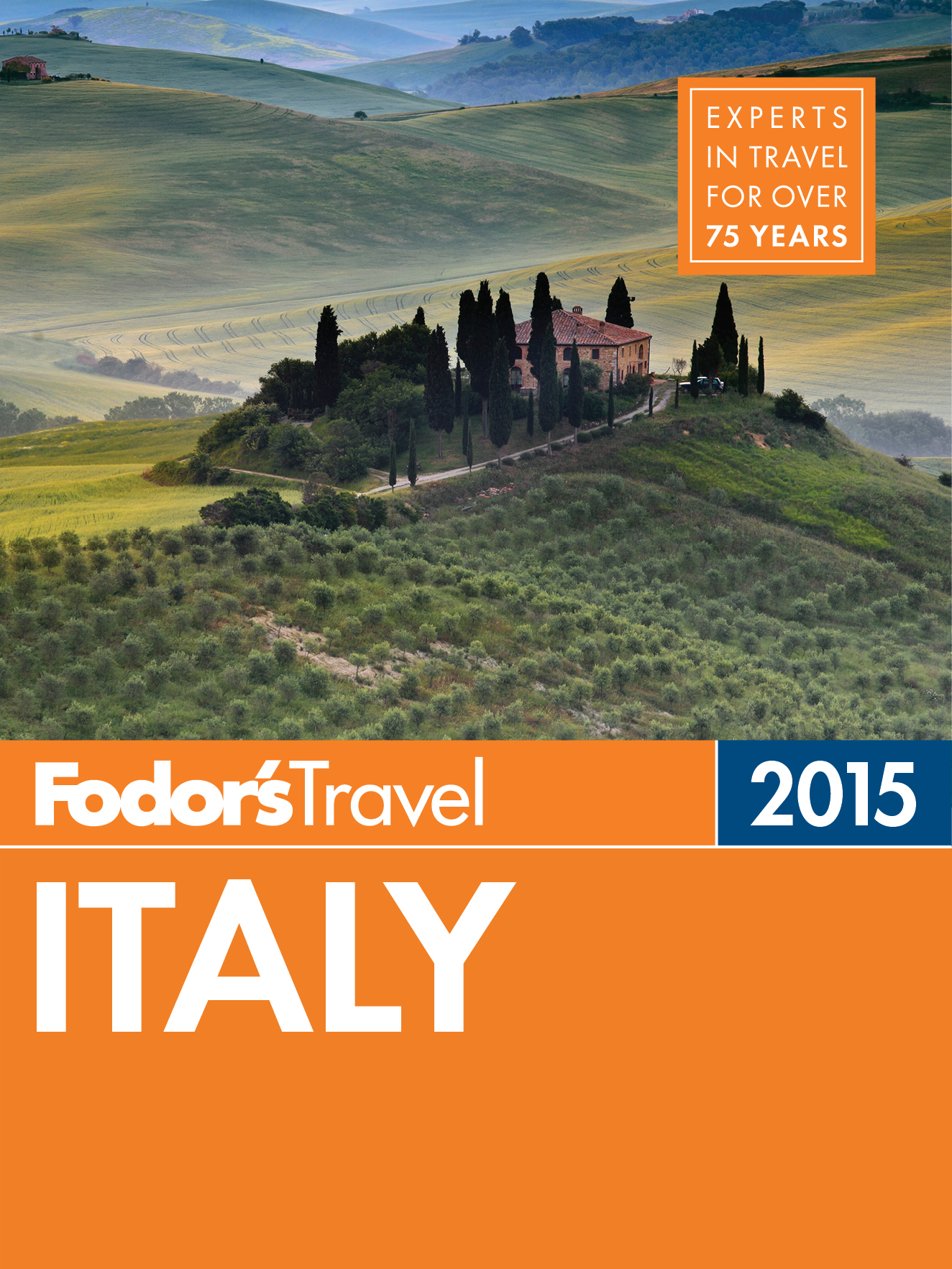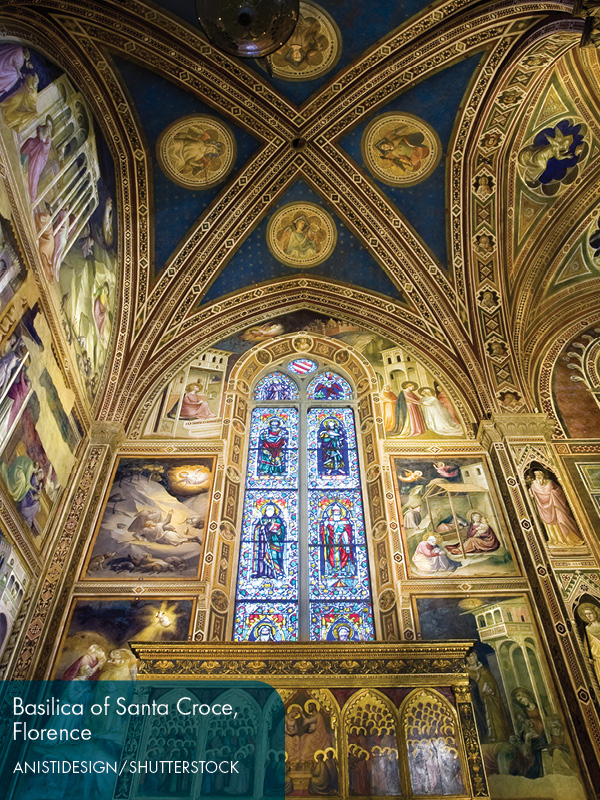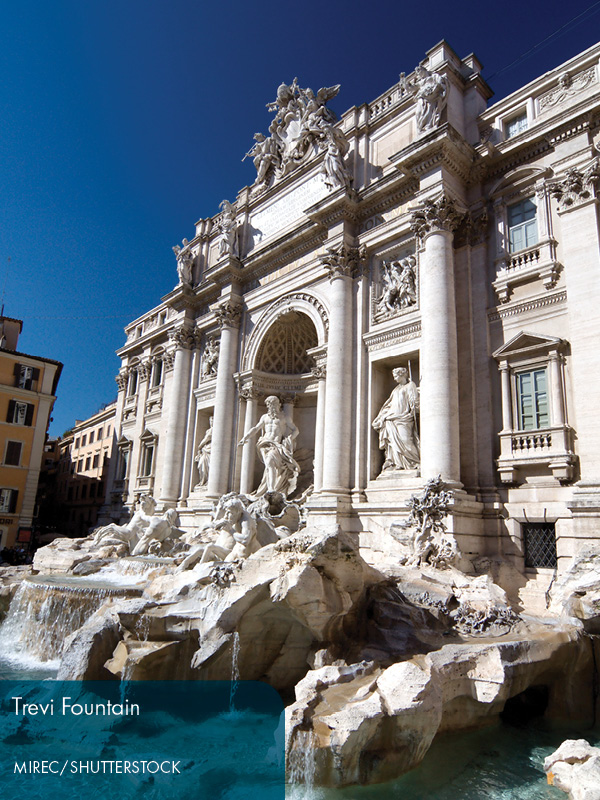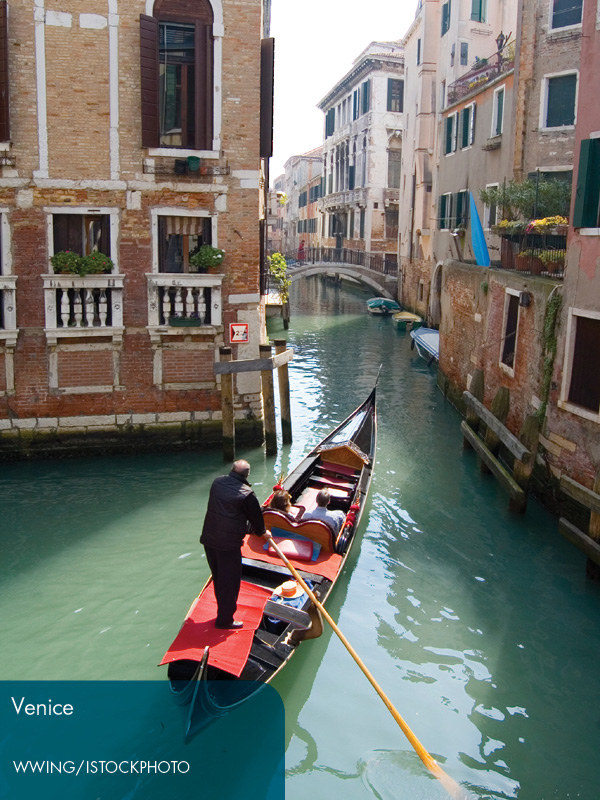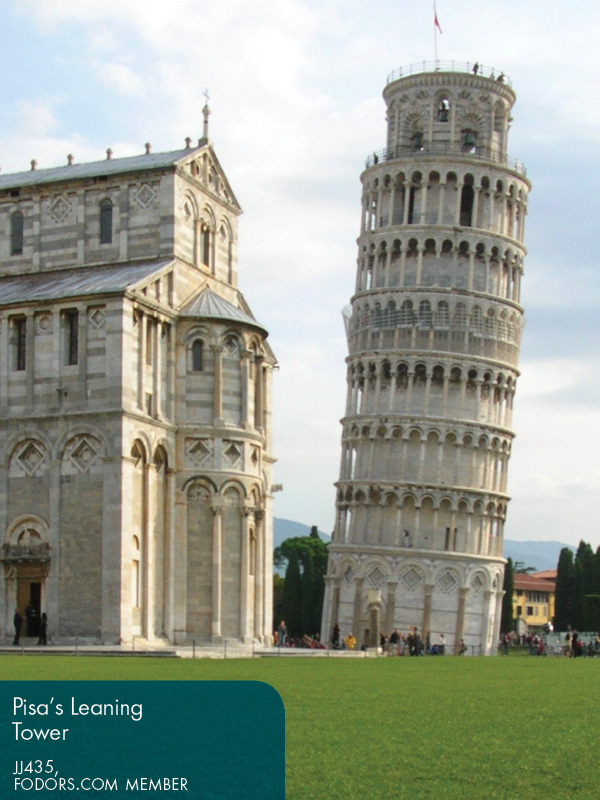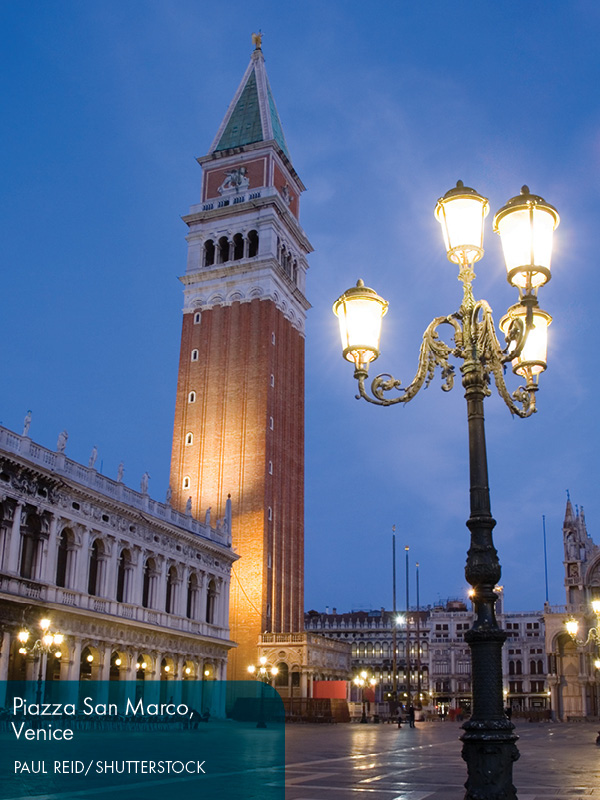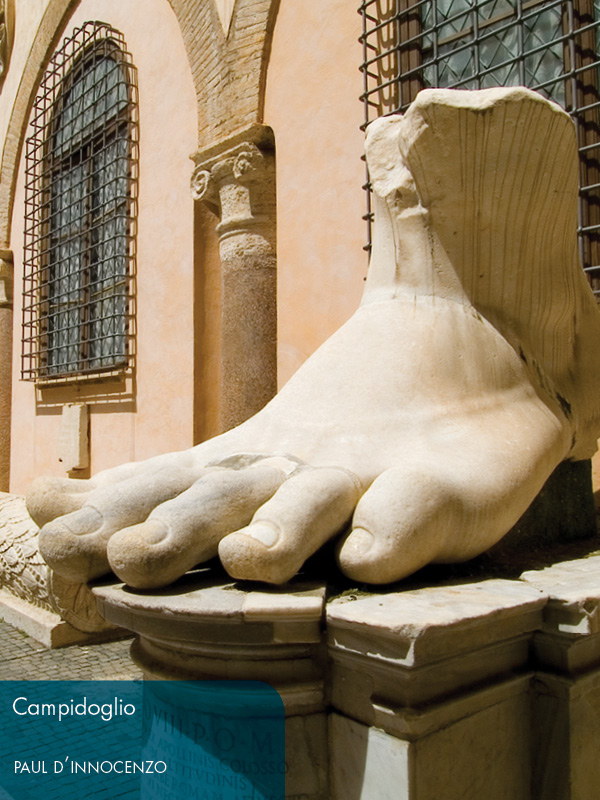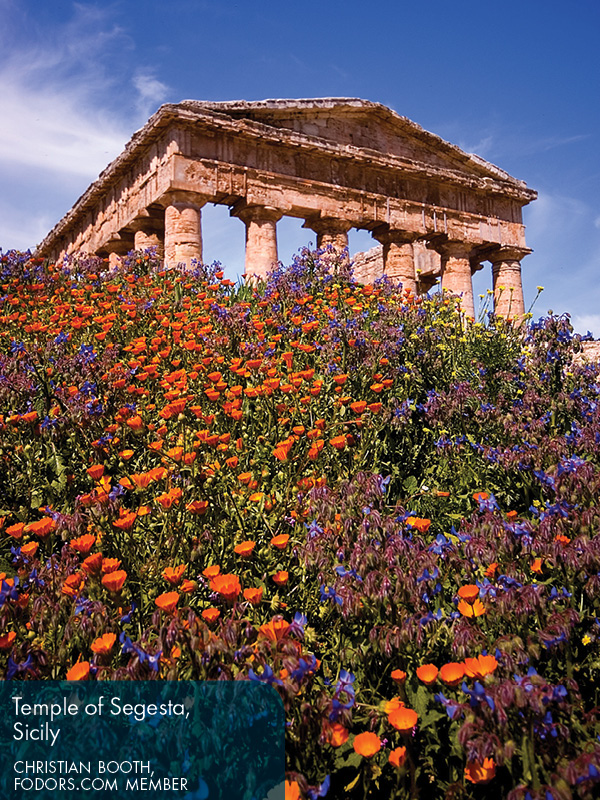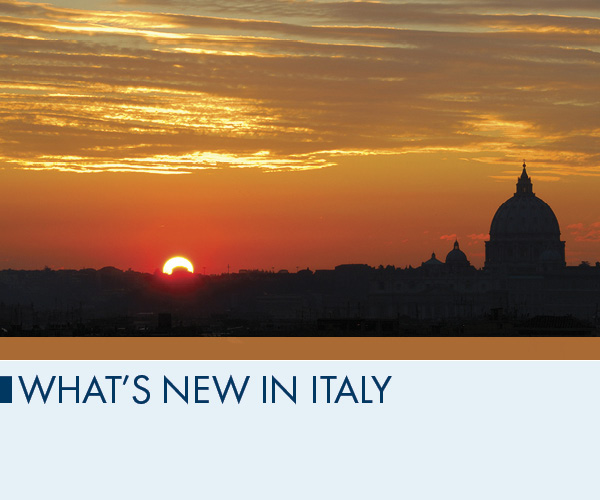Steeped in history and tradition, and bearing a lustrous patina of antiquity, Italy luxuriates in the illusion that change comes slowlyor maybe not at allin the bel paese . Despite the ravages of war and urban renewal, Italians have skillfully retained so much of the past that it seems the historical centers of many Italian cities would be easily recognizable to residents of 350 years ago. The present and the past merge seamlessly. Tiny cars and whining scooters in Italian cities and towns maneuver without missing a beat through narrow cobblestone streets designed for horses and carriages.
The Hot, the Hip, and the New
The pervasiveness of the past also makes us forget that Italy, not by breaking with tradition but rather by continuing it, has been in the forefront of producing major monuments of contemporary style. By creating everything from skyscrapers to sports cars, raincoats to coffeepots, todays Italian designers and architects have infused beauty into the everyday lives of people around the world. In so doing, they have proved themselves to be true sons and daughters of the Renaissance, heirs to Brunelleschi and Leonardo da Vinci, who combined beauty and functionality to create marvelous works of art.
Despite Italys ties to the past, modern and Italian design have become almost synonymous. Perhaps because Italy (or more exactly, Milan) has become the epicenter of the fashion and design world, Italians seem to be more obsessed with fashion and with the new than other Europeans are. While youll easily be able to buy your choice of a classic suit or dress for business wear, for casual wear youll have to look hard for a sweater or shirt thats not in the very latest seasons color or cut. And be forewarned: theres zero tolerance for even slightly worn or frayed clothing.
After Berlusconi
Visitors also tend to forget that Italy is one of Western Europes newest countries, having unified only in 1861. Before that, Italy had been divided into myriad states, some at times independent and glorious, but most for centuries under the domination of Spain, France, Austria, or the Papal States. Most Italians still identify with their region or city more strongly than with the Italian nation, and local cultural and even linguistic differences are still valued. The variety and contrasts among Italian regions, an inheritance from its centuries-long domination by various foreign powers, while making Italy a fascinating place to visit, has hindered its development as a modern nation-state. The chronic instability of its government coalitions right up to the end of the Cold War and the primarily self-serving political ascent of media mogul Silvio Berlusconi have led some to conclude that Italy really cantor shouldntgovern itself. Until the recent emergence of anti-European feeling, many Italians thought salvation lay with an ever-stronger guiding hand from the European Union. More recently, with the end of the long distraction of Silvio Berlusconis rule in late 2011, Italy has struggled under three prime ministers to right its economic ship first through financial storms, then through an equally worrisome economic stagnation which has persisted in Europe far longer than in the United States, largely as a result of the European Unions insistence on continued fiscal austerity at all costs. As of this writing, Italys prime minister is new-kid-on-the-block and former mayor of Florence, Matteo Renzi. He has promised electoral and tax reforms intended to bring a more stable government coalition and tax cuts to help reduce unemployment. Most everyone hopes that by 2015 Italys economy will indeed have taken a turn for the better, but Italians are not holding their breath, and the national mood remains pessimistic for the time being.
Handling Immigration
Italians long enjoyed a reputation for being friendly and hospitable, but lately this has changed. Although Italy has received more migrants than it has exported since the 1970s, the figures grew to alarming proportions only in the 1990s and early 2000s. This increased immigration has had no effect either on crime or the unemployment rate. Nevertheless, xenophobes and opportunists have fanned the flames of fear among the general population while promoting policies that have come under the scrutiny of European human rights monitors. Italian friendliness and hospitality, however, havent entirely disappeared; even those who complain about immigrants will then contribute generously to charities assisting them, and incidents of violence against immigrants remain less frequent in Italy than in other European countries.
A Secular State? Well, Maybe ...
Rome is still the spiritual home of the worlds 1.1 billion Catholics, but, as in other European countries, church attendance in Italy has been eroding since the 1950s, and today fewer than one in five Italians attend church regularly. The election as pope in April 2013 of the Argentinean cardinal Jorge Mario Bergoglio, who took the name of Francis, appears to have burnished the image of the church, even in the eyes of many non-Catholics. Meanwhile, the Conference of Bishops still wields considerable political influence and is not expected to alter its conservative stance on birth control, same-sex relationships, and a greater participation of women in the Church any time soon.
And although the Italian Constitution (1948) proclaims that Italy is a secular state, a crucifix still adorns all courts and schoolrooms, and if youre unlucky enough to land in jail, a statue of the Madonna is likely to greet you as you enter. The Italian courts have ruled crucifixes can stay where they are, reasoning that they are merely innocuous symbols of Italys cultural heritage, and not symbols of religious allegiance.
Getting connected in Rome
Romans are anxiously awaiting the completion of the new Metro C subway line, which will cut through the city center at Piazza Venezia and link with both the A and the B lines at Ottaviano for St. Peters and the Colosseum, respectively. Expected to considerably ease on-surface traffic congestion, the new line progresses slowly because every time a shaft is sunk in Roman ground, some important archaeological site comes to light and all work halts while it is investigated. The planned station at Piazza Torre Argentina, in fact, had to be canceled due to the wealth of material uncovered.


